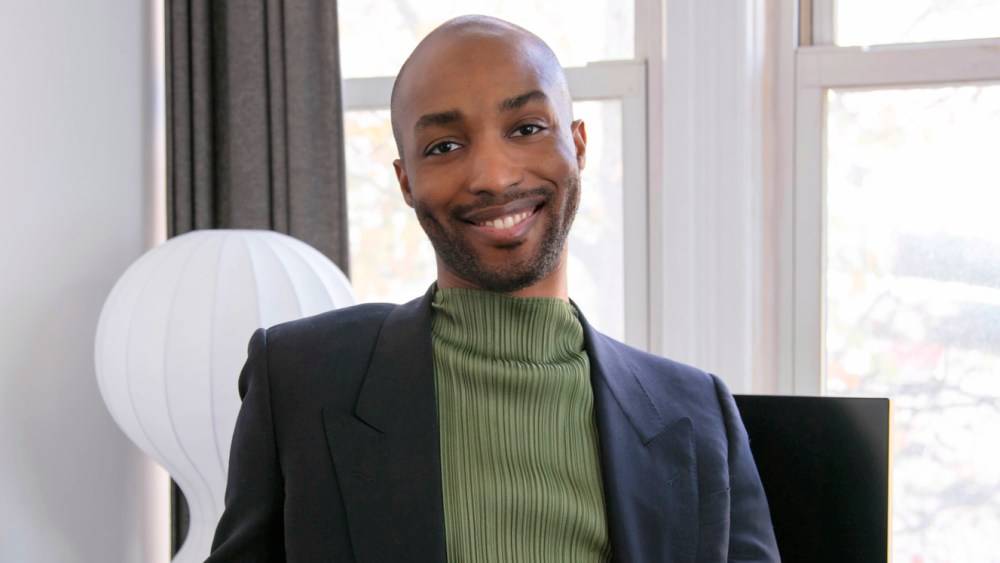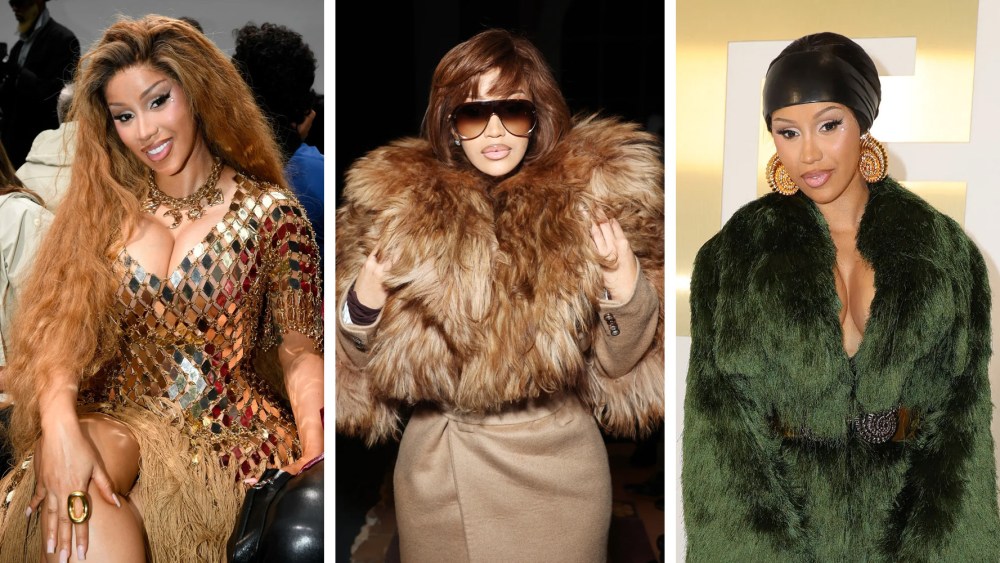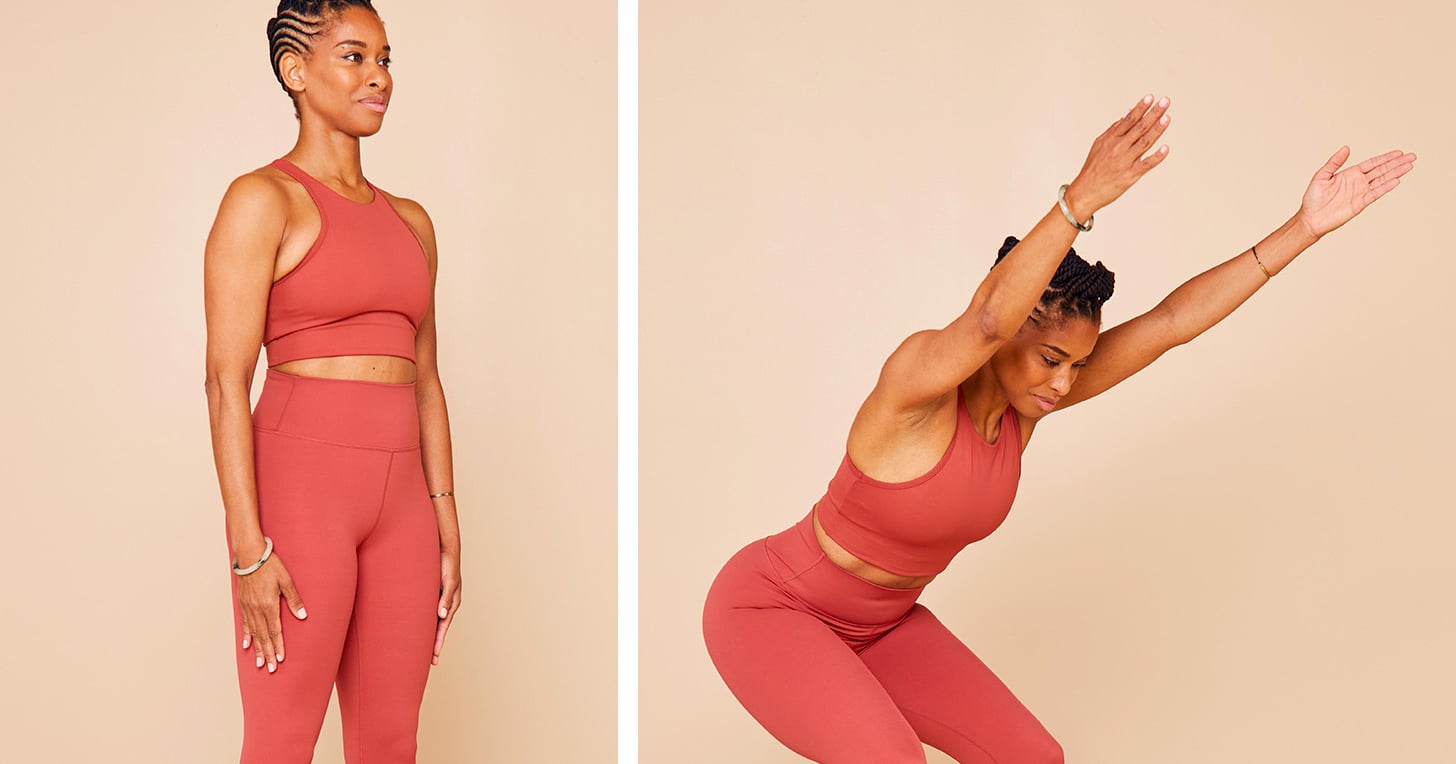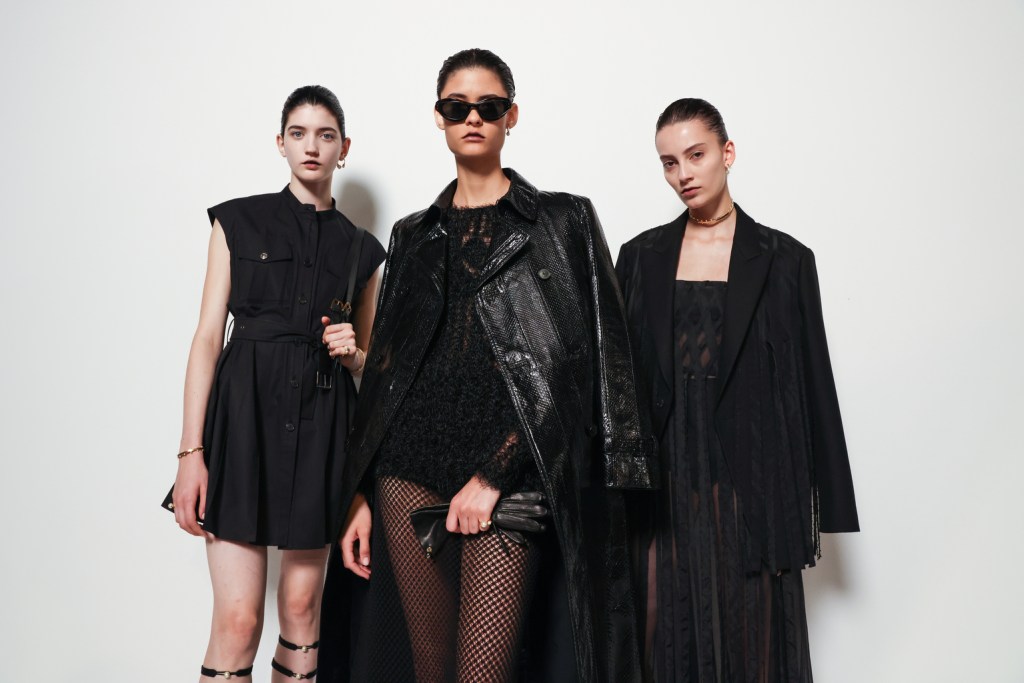Asad Syrkett still has the same thrift store dining room table he purchased at Out of the Closet a full decade ago. He and his partner carried the table home to their Brooklyn apartment from the secondhand shop that donates its proceeds to people living with HIV and AIDS.
“Now it’s under a beautiful tablecloth all the time,” Syrkett said. “But it has sentimental value. And also, there’s nothing wrong with it; not everything in your house needs to be super expensive, super precious. It can just be a thing that you love and that still functions well.”
Syrkett’s dining room table could be a metaphor for his approach to Elle Decor, the 35-year-old magazine that he has been leading since September 2020, when he was named editor in chief in the midst of a global pandemic and culture-roiling social justice demonstrations following the murder of George Floyd. There was nothing wrong with the Elle Decor that Syrkett inherited; it was among the handful of Hearst magazines that weathered years of lashing cuts largely intact. But like outfitting a vintage table with bespoke linens, Syrkett has updated the magazine with an infusion of cultural relevancy.

“The social justice protests were really a call to action for people across industries,” Syrkett told WWD during a recent conversation at his Hearst Tower office. “We all had the opportunity to ask ourselves, ‘OK, what are the gaps in my own work that we can fill by telling smart stories that engage a broad audience?’”
You May Also Like
He got to work right away. At a time when many top legacy editors were still working remotely from their Hamptons beach homes, Syrkett was holed up in the Elle Decor archives, studying back issues and charting a course to bring a design magazine in line with an unprecedented cultural moment. His first issue, in March 2021, featured a cover illustration from Detroit artist Rachelle Baker that reinterpreted expat-American socialite and designer Nancy Lancaster’s 1958 Yellow Room, a yellow-walled London salon that came to epitomize the decaying luxury of the English-country look.
Lancaster’s parlor evoked her own nostalgia for the antebellum South; her grandfather had an estate near Charlottesville, Va. And in his editor’s letter, Syrkett recalled being “romanced by [the Yellow Room’s] sunny walls” when he first encountered it “on the cover of a well-known magazine.” (World of Interiors ran the image on its cover in 2010.) But he continued: “Then I noticed two small tables…with bases depicting crouching Black figures, each one supporting a fringed plinth with his contorted body: a sickeningly common representation of bondage in Western decorative art.”
Baker supplanted the tables with a Black woman in a yellow dress, who looks directly at the viewer. It was a powerful statement about the intentions of Syrkett’s Elle Decor at a time of acute societal transformation. (The cover illustration and Baker’s process drawings are now in the permanent collection of the Smithsonian Institution’s National Museum of African American History and Culture.)
“I thought [Baker’s illustration] was a great way to get people looking at something beautiful, and then hopefully get them to think about what’s on the other end of that,” Syrkett explained.
If getting readers to think about the cultural and social impact of design is central to his mission, Elle Decor still offers plenty of buzzy listicles and aspirational money-is-no-object celebrity home spreads. The September 2023 issue, for example, featured a tour of Megan Rapinoe’s and Sue Bird’s SoHo pied-à-terre with interiors designed by Mark Grattan. But Syrkett also has brought the rarefied world of interiors down to earth with a humanistic approach to design (epitomized by the magazine’s frequent features on public spaces like hotels, restaurants and even film and TV sets) and a dash of whimsy. The April 2024 cover featured what the magazine billed as the “the world’s most glamorous studio apartment.” An 800-square-foot apartment near Central Park that was originally the parlor of publishing magnate Joseph Pulitzer’s Gilded Age mansion, it was completed in 1903 by architect Stanford White of McKim, Mead & White, and still retains its original marble mantle and plasterwork featuring putti, urns and acanthus leaf garlands.
“I thought it was a wonderful coming together of what might seem like diametrically opposed inclinations; grandeur versus the asceticism of a studio,” said Hearst Magazines editorial director Lucy Kaylin. “It was this multitiered wedding cake of a space, but the fact that it was a studio made it witty and wonderful.”

It was the type of story that offered an unexpected take on luxury interiors that have become ubiquitous in the social media era.
Added Syrkett: “The cover feels very Elle Decor: reverent of the magazine’s history specifically and traditional decorating generally, shot through with a modern energy. We think a lot about that mix all the time.”
At Peace in Issey Miyake
The eldest of five children, Syrkett first lived as a child in a four-room, two-bedroom apartment in Harlem, N.Y., where space was at a premium and eating dinner together at a properly outfitted table was a sacrosanct ritual.
“That was a formative thing for me; we had a full-size dining table that we collapsed down when we were done with dinner,” he recalled. “Everything was modular and could be stashed away. Both my parents, especially my father, cared about tidiness and rigor. That definitely shaped my own approach to storage and organization.”
It also shaped his approach as an editor.
“I’m always curious about the function behind what you see; how is this working for the way this person lives, and the way they organize their life at home? And what are their hopes and aspirations for their life at home?”
His mother was an elementary school art teacher and his father was a musician and music producer. A turntable and large speakers were the focal point in the living room. His parents were partial to West African statuary. There were also framed movie posters and, he recalled, some “formative kitsch” at his maternal grandmother’s house, “like the oversize wooden spoon and fork hanging on the wall in the kitchen, which was a favorite of my grandfather’s.”
Both of his parents transitioned into what could be considered more practical careers as their family grew; his mother works in IT for the federal government and his father is a management consultant. Eventually, the space constraints of apartment living necessitated the family’s flight from New York City to Trenton, N.J., where Syrkett attended high school at the prestigious Lawrenceville School, which is situated on more than 700 acres surrounded by old growth forests and farmland in Lawrence Township, N.J.
“We had a front yard and a backyard. I took a school bus to school. It was a totally different universe,” he said. “My ideas about space were so challenged by this new environment, which was so lush, so full of space.”
But the creative energy of New York City — with its Art Deco landmarks and ever-evolving skyline — loomed. And when it was time for college, Syrkett made a beeline for Columbia University, where he earned a degree in architectural history. Consecutive summer internships at Architectural Record led to a full-time position as an assistant editor after graduation, where he was mentored by Record editor in chief Suzanne Stephens and art director Helene Silverman. There was a stint at Architectural Digest and several years at Curbed, where he rose through the ranks to become deputy editor under editor in chief Kelsey Keith. In 2019, he took a position in business development at Swedish furniture brand Hem in order to immerse himself in the business side of design.
“Art history is all about making connections between time periods and styles and the social mores of the day,” Keith said. “If you’re coming at your subject area with that foundation, then you are able to connect to things culturally, so it’s not just about surface decor. And that was always something that Asad and I connected on — knowing that there is a context for things and being able to weave that in a way that’s not just a didactic history lesson, but something that [readers] will find interesting.”
Syrkett describes himself as a modernist and is partial to the bold colorways of Italian Futurism. He’s also “a big lamp guy” and admits that he might have too many.
“When they’re off, they’re sculptural objects. When they’re on, they’re providing some beautiful warm glow. When I get home, I just want to relax into the tabula rasa of the space.”
His favorite color is green, the color of new beginnings and equanimity. When he was in college, he hung green curtains in his freshman dorm room. (He lucked out in the housing lottery, and scored a single.) “They were Martha Stewart Living for Kmart curtains that I bought with my own summer earnings,” he laughed.
Naturally, he eschewed the garish overhead fluorescent light in favor of lamps. “I was going for a warm, lounge vibe. I really tried to home the space up, but on a student budget. Of course, my parents helped me to a certain extent, but I was really determined to do a lot on my own. And so I’m very no frills about some of that stuff.”
Colleagues describe him as unflappable but firm and lacking the sharp-elbowed competitiveness of many legacy magazine denizens.

“He’s highly educated, incredibly intelligent, and has a super elevated taste level, but he’s not entitled,” Keith said. “He’s extremely diplomatic in his professional life, but no one’s getting anything by him. And that is his great strength, to be able to collaborate with people and listen to people, but also have a good sense of his own intuition.”
Kaylin recalled first meeting Syrkett on Zoom, when the pandemic necessitated working from home. “I was immediately impressed with his sense of vision about what he thought was right for his brand and right for the world of design,” she said. Now, they have their one-on-one meetings in person.
“He’s just not one to ever freak about out about anything,” added Kaylin. “The industry could be convulsing, the sky could be falling, and he just comes into my office, peaceful and chic, usually in some Issey Miyake pants, and he takes a seat across from me, and we just kind of get into it. And that’s the nature of who he is, he has a lot of equilibrium. He’s very focused on what matters.”
A More Diverse and Democratic List
As Elle Decor marks its 35th anniversary this year, Syrkett’s goal is to further connect the magazine’s legacy in traditional design with the urgency of the modern. He’s done this across the magazine’s platforms in areas including story selection but also with the annual Elle Decor A-List — a roster of the 101 designers across residential interiors, architecture and landscape. Editors begin working on the summer issue in December, and it has become decidedly younger and more diverse under Syrkett’s supervision. (In the first half of the year, Elle Decor’s total print readership has grown 13 percent to more than 3 million; Gen Z and Millennial audiences have grown the most — at 35, Syrkett is squarely in the latter cohort — and now make up more than half of the magazine’s readers.)
“At its core, it is a list of the people making the most exciting work in design right now, work that makes us think about rooms in a new way, or with a visual sensibility we’re not seeing plastered all over Instagram,” he explained. “And we also spend a lot of time thinking about the mix of people on that list geographically and in terms of gender, race, all of those elements, because that’s also important for us.”
Syrkett’s mission to democratize design also extends to the magazine’s collaborations with public institutions.
“As a New Yorker, being able to work with New York City cultural institutions is such a gift,” he said. The magazine collaborated with the Brooklyn Museum on gallery seating for Alicia Keys’ and Swizz Beatz’s “Giants” exhibition earlier this year.
“They wanted to create a different type of viewing environment for the art in order to make the art feel accessible spatially, so you’re not just looking at this wall-mount art from a remove but you’re are living with it, even if you’re only living with it for 60 minutes during your visit to the museum.”
And Elle Decor will soon unveil its second collaboration with Lincoln Center for the Performing Arts — in 2021, the magazine partnered with A-List firm Cullman & Kravis to update the VIP lounge at Alice Tully Hall. In mid-September, Elle Decor and John and Christine Gachot will open the doors on a redesign of The Metropolitan Opera’s Eleanor Belmont Room. Syrkett chose the husband-and-wife team after seeing their work at the Pendry Manhattan West hotel. He was especially taken with Bar Pendry, the intimate evening lounge with its moody lighting and lush amber and gold color scheme that feels like stepping into a warm embrace.

“What they did with the Pendry was so smart and sensitive and scaled appropriately and didn’t feel like it was overbaked in any way,” he said.
The Gachot’s refresh of the patron’s lounge — originally used by the Metropolitan Opera Guild, which was founded by Belmont, and designed in the 1960s by interior’s icon Billy Baldwin — includes a curated collection of furniture from Roche Bobois, wall coverings by Elitis and a custom brass bar by Philadelphia-based Amuneal.
“In this era, it’s understood so much more deeply the ways that design brings value to a space,” observed Syrkett. “I think people in general are more sophisticated than they’ve ever been about their homes, their retail spaces, restaurants, hotels. And with so much design content on social media platforms, I always say, ‘Well, what will make us gasp? What will surprise us and make us feel like, wow, I’ve never seen a room like that?’ Because that’s the thing that’s going to get our audience excited, too. And I think it is a responsibility of any media outlet to keep the audience engaged by keeping them on their toes, by surprising them.”



